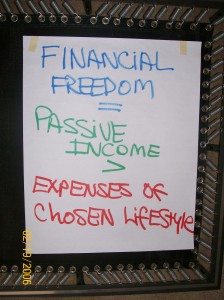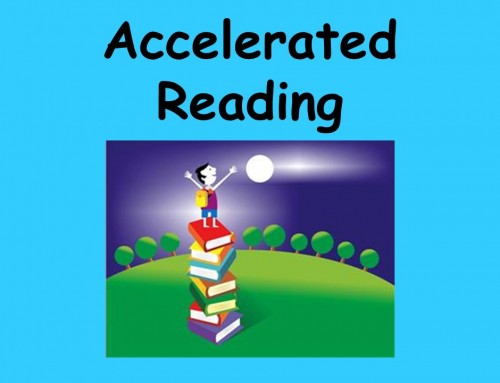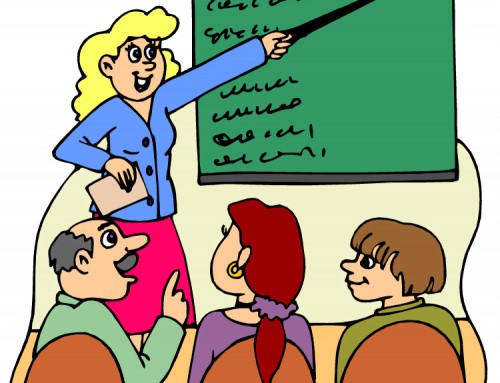Financial Planners and Educating Clients – How to Do it Right!
If you’re a great financial planner, you really do care about your customers. You want to see them reach their financial goals and see them happy, safe and secure over the years.
In order to do this, it usually requires education on your part. Sometimes a little education and sometimes a lot of education. But education, suffice it to say, is almost always part of helping clients move toward their goals. This type of education is usually done with your clients on a one-to-one basis on an as-needed basis. It’s all good.
Education is also a great way to attract new financial planning clients into your business and this is where it starts to get messy. Financial planners consistently make three mistakes in the area of client acquisition when it involves putting on an ‘educational event’ or seminar for potential clients.
If you are guilty of committing any of these three mistakes, I’ve also provided some suggestions that will make using the events you work so hard to put on, much more valuable to both you and your prospective new clients.
The Three Mistakes Many Financial Planners Make During Education Events
1. Most Financial Education Events are BORING!
And the reason they are boring is that you were probably never taught how to make education ‘sticky’, in other words, you’re not a trained teacher! Most financial planners have no idea…
- How people learn
- What makes education fun
- How to create credibility in the first few minutes of an event so your audience will trust you
- How to keep people engaged for any length of time
- How to make the information relevant
- How to teach the information in a way that helps your potential customers remember the information
- How to teach in a way that helps your customers like and trust you (and relate to you)
- How to hook your audience into wanting more from you after the event is finished
Now if this sounds like it would take a lot of training, it can. But it doesn’t have to. You can take the following basic pointers and improve your presentations by a long shot. Here’s what you have to know.
STOP USING POWERPOINT PRESENTATIONS!
Yes, you heard me correctly. Stop using slides to give your audience your presentation. Use a flip chart and big, fat colorful markers instead. Only use slides for illustrating data the audience might need to see in order to understand what you’re talking about, to put up a joke or to provide an inspirational video. Something like that. But do NOT put your talk, bullet point by bullet point, on a slide presentation. You will lose most of your audience right up front. And here’s why…
There are three basic learning styles that human beings function within:
1) Visual – you learn by seeing or reading
2) Auditory – you learn by listing or talking
3) Kinesthetic – you learn by doing and feeling
These learning styles aren’t cut and dry, meaning most human beings aren’t purely one or the other but a combination of the styles and the combination can change depending on the circumstances in the learning environment, often called the CONTEXT, but we’ll talk about in a later article.
Anyway, when you put things in a Powerpoint and you have visual learners, they can’t decide whether to watch you or the screen and the kinesthetic people are so bored they can hardly stay in their seats.
The biggest challenge with Powerpoints is that people tend to want to write down what’s on the screen so they then miss huge parts of the lecture. All in all, Powerpoint is generally a poor teaching tool. Most people use them as a crutch because they have never been trained to give a great presentation.
The Power Of A Flip Chart
INSTEAD of the dreaded Powerpoint presentation, learn to use a big flip chart with big, fat colored markers. Place the flip chart stand to your left on the stage or floor.
Write key points on the flipcharts, not an entire paragraph of information. Here’s an example of what I mean:
 Keep in mind this was for a kids Camp Millionaire/Money Game event but I’d do the exact same thing for an adult program. Money has gotten so dang serious…a little color and playfulness goes a long way in livening up (and loosening up) your audience.
Keep in mind this was for a kids Camp Millionaire/Money Game event but I’d do the exact same thing for an adult program. Money has gotten so dang serious…a little color and playfulness goes a long way in livening up (and loosening up) your audience.
Here are some keys in working with a flip chart:
- Use simple, key information
- Stand in front of the flip chart while you’re writing…it keeps them curious
- Use 2-3 colors (be mindful to use RED only for accents…not like the example here:-)
- Use the FAT side of the markers…Pilot Markers are my favorite (just don’t breathe deeply!)
- Prepare your flip charts on regular paper in advance, in other words, put some thought into them and know what you’re going to write/draw on them.
- You can pre-write a little bit on the page but never fill it out completely because it’s the movement of creating the information that helps make it sticky.
- After you’ve written what you want on the flip chart, stand by the flip chart and have the audience read what you wrote…don’t read it to them. Again, it’s the act of them reading it themselves that helps put the information into their heads. Sarah Singer-Nourie had us sing a little song…Stand By Your Content…that is a good reminder.
2. Most Events Try To Teach Advanced Information to Customers Who Need Basics
I have seen this situation happen over and over again. A local financial planning company spends countless man/woman hours and hundreds, if not thousands, of marketing dollars to bring in an audience. Then they sit them down in front of the proverbial Powerpoint presentation and proceed to talk ‘at’ them about stuff said audience either doesn’t care about or doesn’t understand.
In any presentation, you must enroll your audience in the subject matter and get a pulse from them to see if:
- They are interested in the material, and if…
- They are ready for the material.
It’s important to make what you’re about to say relevant to your audience in some way. If it isn’t, they won’t listen. I’ve found it best to use one of the powerful accelerated teaching techniques we use in our programs called Enrolling Questions. Enrolling Questions help us engage and enroll people of all ages in the learning process…but they aren’t always questions.
As the name implies, this technique involves figuring out how to enroll a person in what you’re about to teach him, i.e., get him excited, engaged, listening and wanting more. You want to make sure he’s onboard with you’re about to teach him.
It’s important to do your best to enroll 100% of your audience. Sometimes you have to ask several additional enrolling questions to get 100% enrolled, but, in the end, it’s worth the effort.
Enrolling questions can be actual questions:
Q. How many of you want to have more money in your life?
Q. How many of you want to keep that money safe so you can actually live on it later?
Great…(and on you go).
When you ask an enrolling question, raise your hand really high to encourage your audience to raise their hands. When they do, say, “thank you.” Remember…both kids and adults love being acknowledged.
IF, by chance, only a few people raise their hands to your prepared enrolling questions (and you must prepare them based on who will be there), you’ll have to think on your feet and come up with a couple more until you figure out what WILL enroll them.
Enrolling questions can be a statement of declaration:
A statement of declaration is a powerful way to begin any presentation (notice I don’t use the word speech). A statement of declaration is simply an announcement you state with meaning—something that gets their attention immediately. This statement can be a starting point from anywhere in your speech as long as it relates to your topic. What I love about this method is that this type of statement usually wakes up the people who may have mentally left the room and gets them back into their seats, so to speak.
What if you stood in front of a group of retired folks and stated, “Your Kids Are Screwed!” And then went on to teach them how to protect the money those retired folks want to leave their kids?
Here’s another memorable statement of declaration I read about online that was used by a young college student, “I’m tired of being a grunt!” The entire audience fell silent because most of them could relate to that statement in some form or another. It grabbed their attention, big time. The rule of thumb when making statements of declaration is to say them with strong conviction. Say it like you mean it.
The point is, you have to figure out what is relevant to each different audience or your words will fall on deaf ears.
Enrolling question can be staggering statistical statements:
A staggering statistical statement is one that includes statistical information. This information is usually measured by a percentage, a number, or a dollar value. For instance: “Nine out of ten Americans don’t learn about money before they get out of high school!” “Two hundred thousand coeds will drop out of college this year because of credit card debt!” Or “Our country has a ginormous deficit of 54 TRILLION dollars!” Make sure you do your research when using a statistical statement to enroll your audience. The information has to be 100% accurate. If it isn’t, you will lose your credibility and your audience.
Enrolling questions can be a story or a metaphor:
One of my favorite examples of this is in a book called Quantum Teaching: Orchestrating Student Success by Bobbi Deporter, Mark Reardon and Sarah Singer-Nourie. Sarah uses this technique in her class to start a conversation about sentence structure by asking the kids if they like Oreo cookies. As she describes the cookie as having an outer hard shell on one side, gooey, yummy creamy stuff in the middle and a hard shell on the other side she likens it to a paragraph. A paragraph has an introduction on the outside, all the wonderful details in the middle and a conclusion on the other side.
Regardless of which type way you choose to get your audience’s attention, just remember to think about who’s in the room before hand. When I personally do presentations, the time I spend designing how I will enroll my audience is usually the most important time invested.
Experiment with using the different types to see which one works best for you and your information and audience. Make sure to memorize it and practice it enough so you have it down pat. If you grab your audience’s attention from the beginning, chances are you’ll keep it until the end.
3. Don’t Mix Financial Education Events With Sales
It’s a simple, well-known sales fact…people buy from people they know, like and trust. And if you’re bringing a new audience to expose them to you and your firm for the first time, it’s imperative that you make the events purely educational. You want them to walk out of the room with a warm, fuzzy, “Wow, that was great information. I had a great time learning blah-blah-blah. I wonder what else they know that I need to know?”
When you try to sell new people too quickly, when you attempt to pepper in a product offering, your audience will smell it a mile away. Though a lot of seminars are designed to sell a product or a program, financial planning a little bit different. You’re cultivating a relationship you want to keep for a very long time and doing this takes time.
BONUS TEACHING TIPS:
- Don’t STAND behind anything.
- Don’t LEAN against anything.
- Don’t read from a script but it’s certainly OK to check in with an outline.
- Don’t pace back and forth.
- Stand close to the front (if on a stage) or close to the audience so they don’t think you’re afraid of them.
- Use a wireless mic when possible.
- Practice and know what you’re going to say.
- If you’re nervous, you’ll stop when you remember the event is about THEM learning, not YOU being a perfect presenter (there IS not such thing).
- When you’re finished with the event, write down what went well and what you need to improve next time.
- Don’t apologize for something your audience has not idea about.
- When they clap, don’t clap with them. Stand and take the acknowledgement and just let it sink in. You did good after all!
- Always have a sheet of paper that asks for general feedback and testimonials and what their biggest question is about ____. This will give you the information you need to create your next event.
- Let them know you want to know what they need.
- And last, but certainly not least, HAVE FUN!!!
In Summary…
The thing about helping people grow their money is a conundrum. People pay others for a lot of other services much easier and willingly than they will hand over their money to you or your firm to grow for later. There is a lot of fear involved for most people and you have to do what you can to help them with their negative belief systems (that’s a whole other seminar).
Take stock of whether you make any of the educational mistakes above and do what you can to correct them quickly. You’ll be so surprised at how much easier it will be to get…and keep…great financial planning clients. And generally, a smart client is an easier client to work with.
Note: for more information on how you can learn to be a engaging and powerful presenter who rocks his/her audience, check out our Creative Wealth Train-the-Trainer workshop. You’ll have more fun learning how to teach than you ever thought possible.






Leave A Comment